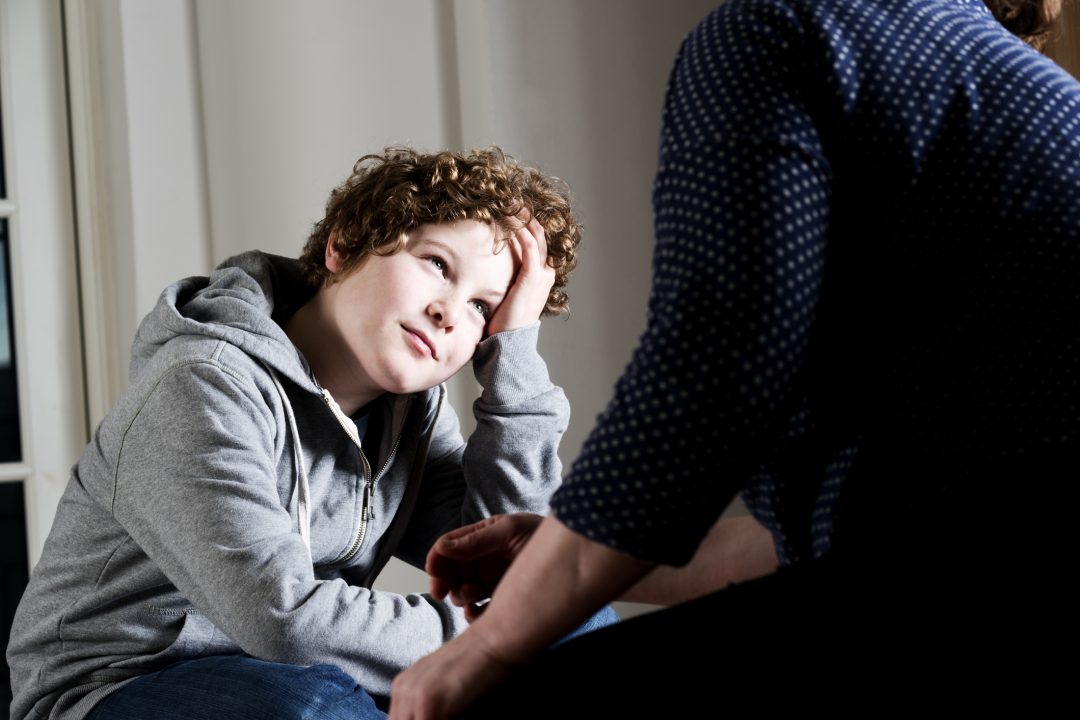Teaching Consent and Advocating for Children's Rights
Categories: Safety
TW: child abuse, consent
Everyone’s got one.
You know the type.
That family member who always expects a hug from your kids when you see them. The one who pulls them in for a hair ruffle or a cheek pinch or tight squeeze. The one who pretends to get upset when your child doesn’t want to kiss them goodbye, or actually does get upset, like the rejection of a child is the thing that will make or break their human spirit. That one.
Well, we’re calling it. Your number’s up, affection-demanding family friend or relative!
PSA: Kids should not have to hug, kiss or otherwise touch anyone they don’t want to, and they also have the right to refuse to be touched by anyone they choose. What’s more, parents need to actively support this right.
‘Kids need to grow up knowing that they own their own bodies and nobody should be touching them without their consent,’ says Holly-ann Martin, ParentTV expert and Managing Director of Safe4Kids, an organisation that specialises in child abuse prevention education. ‘This is something that has to be explicitly taught to them by parents, otherwise they might not understand that they’re allowed to decline touch, especially from adults. It needs to start young, too. When I talk to parents, I encourage them to teach consent from when children are babies.’
WATCH: Teaching kids about consent, with Holly-ann Martin
Why is it important to teach consent to kids?
Well, the example at the beginning of this piece about the family friend or relative who expects to be hugged or kissed by your child as an indication of their affection is a pretty typical example. Kids can get some pretty contradictory messages about how they’re supposed to relate to adults, and what the expectations are in terms of their manners and politeness. When kids believe adults are authority figures who can demand compliance from any child in any circumstance, it’s hard for kids to advocate effectively for their own rights and autonomy when they conflict with an adult’s request. So, teaching kids that they can decline hugs or kisses but still be polite and respectful to adults is a nuance parents need to communicate to them. ‘There are other ways to show respectful affection,’ says Holly-ann, ‘and your child might be more comfortable with blowing a kiss or giving a wave. Teach them that those things are totally acceptable.’
What does consent for kids actually look like?
One of the most effective ways to teach consent to children is to role model it, both in your behaviour towards them and your boundaries for yourself, says Holly-ann.
This might mean asking your children if it’s okay for you to pick them up, or asking them if they’d like a cuddle rather than just doing it. This empowers them to make those decisions about their bodies themselves.
Holly-ann Martin
It’s also good to let them see you declining physical contact if you don’t want it, too. You might say something like, ‘sorry, I’m not a hugger,’ to that same demanding relative, or habitually offer a handshake or a smile and nod rather than a kiss on the cheek when meeting someone. Your kids also need to see you defending their right to refuse hugs or kisses, clearly and consistently. Try saying ‘Katie’s not into hugs but she can give you a BIG wave!’ to that relative or take advantage of new norms around social distancing to offer a foot or elbow tap rather than an embrace. As a side note, if your child really doesn’t want to hug or kiss someone and that’s uncharacteristic for them, ask them about it. There should be no touching that is secret, and open and honest conversations about it help ensure abuse isn’t given shelter.
What are the consequences of not teaching consent?
Teaching consent isn’t just about body autonomy, it’s also about your child forming the protective behaviours that could keep them safe from harm and able to assert themselves when the situation requires it, says Holly-ann.
We know that there are fourteen-year olds watching two hours of hardcore porn a week. They say they’re doing it to learn technique and style, but what they’re also learning is that they don’t need to seek consent from a partner before any sexual acts take place.
Holly-ann Martin
Teaching our kids that they should be asked for consent if anyone wants any sort of physical contact prepares them to stand their ground and demand safer, consensual sexual encounters when they’re older. It also helps to change the narrative about what sex should be and how it should unfold.
Understanding consent also helps children to recognise when they’re not feeling safe and if someone is doing something predatory and/or inappropriate, says Holly-ann. With stats showing that up to ⅓ of children will be abused before their 18th birthday, starting the conversation about their rights over their bodies, public and private body parts and what ‘unsafe’ feels like is essential, and it needs to begin early. The threat is real. Education helps to combat it.
These can be hard conversations to have. As adults, a lot of us are uncomfortable talking about bodies, privacy and sex with our kids, but it’s too important not to.
For some tips on how to get started learning and teaching your little ones about this topic, check out these videos from Holly-ann and some of our other experts!




